UG and Ballast Nedam sign contract for construction of Feringa Building
On Wednesday 6 March 2019, Vice Chair of the Board of the University, Jan de Jeu, and Chair of the Executive Board of Ballast Nedam, Cenk Düzyol, signed the contract for the construction of the Feringa Building. This impressive building for scientific education and research is to replace the almost 50-year-old Nijenborgh 4 building. Construction is expected to start in the summer of 2019.
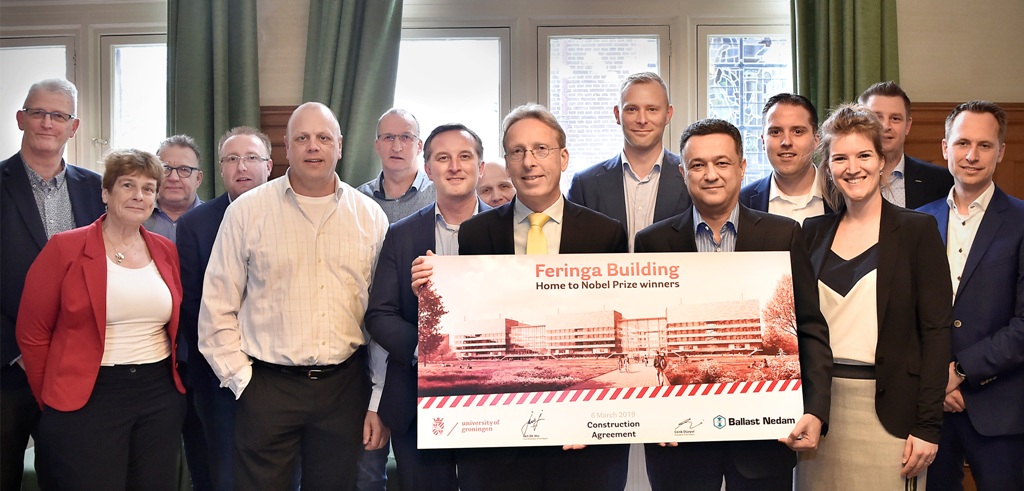
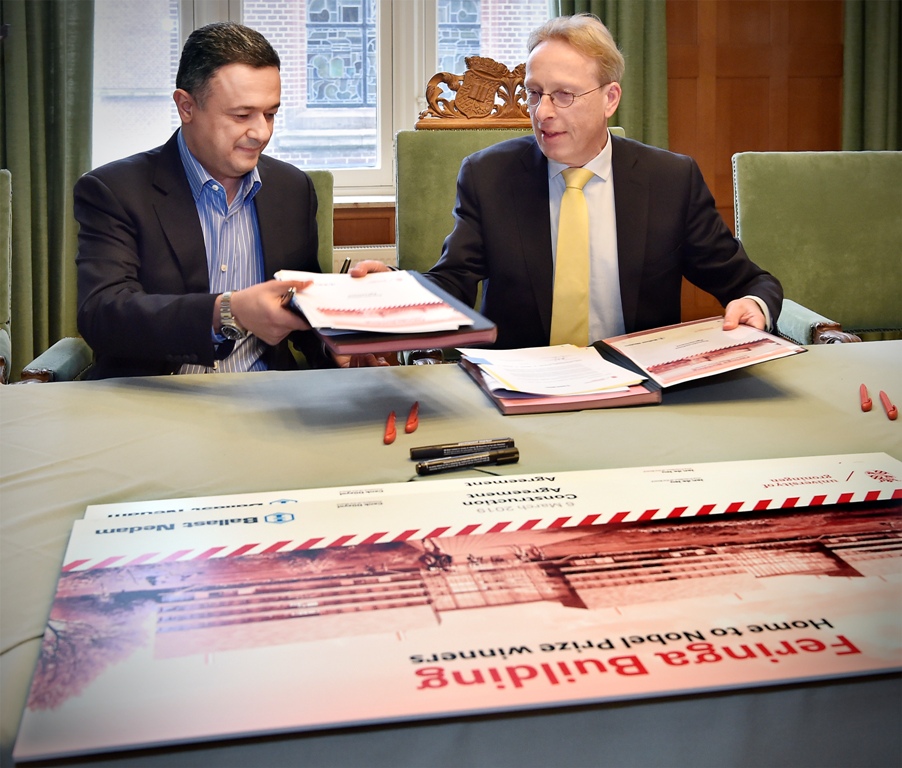
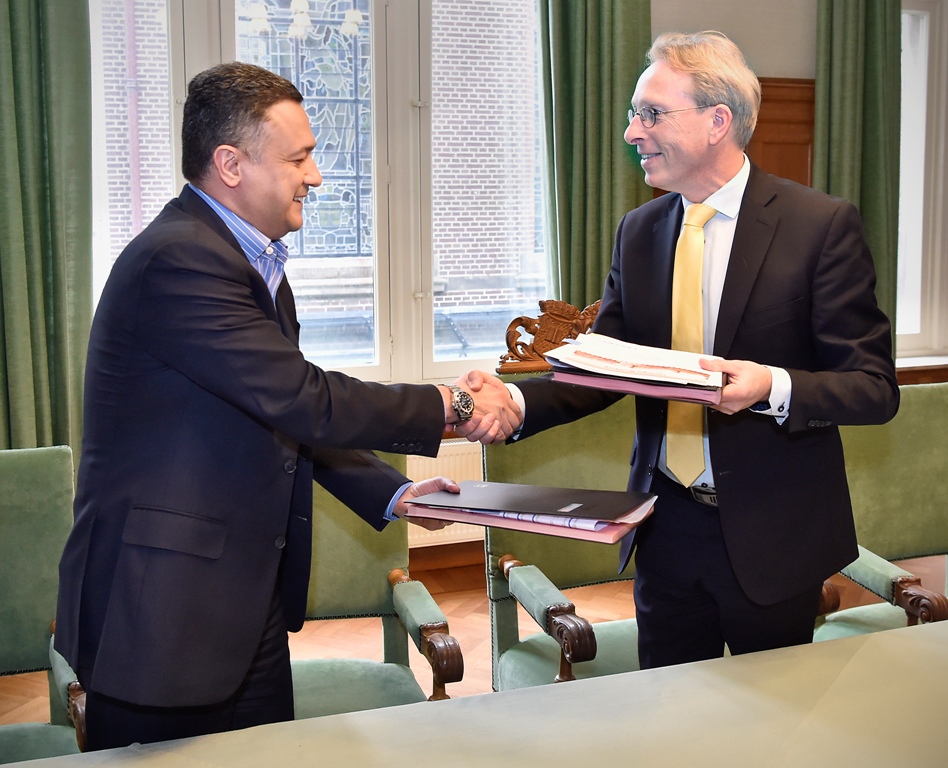
Jan de Jeu is delighted that construction can soon begin: ‘With this new building, we are going to create very good research facilities for our top academics and students. This is important in order to remain globally prominent. Ballast Nedam has demonstrated their expertise and experience to construct the biggest UG building project ever’.
‘We are very pleased that we will be able to add the Feringa Building to our order portfolio ,’ says Cenk Düzyol. ‘With our expertise in state-of-the-art research facilities, we are confident that we will be able to complete this project to the University’s full satisfaction.’
Home to Nobel Prize Winners
The building is named after Professor Ben Feringa, who conducted his Nobel Prize-winning research at the Faculty of Science and Engineering (in Nijenborgh 4) and where Prof. Frits Zernike also won his Nobel Prize for Physics in 1953. The Feringa Building, ‘home to Nobel Prize winners’, underpins the University’s ambitions to continue contributing to important international research in fields such as chemical engineering, nanotechnology, material research and astronomy.
Classrooms, clean rooms, labs and installations
This will be the Faculty of Science and Engineering’s third new building, after the Bernoulliborg and the Linnaeusborg. The building will take the form of three connected V-shaped wings and will provide room for around 1,400 students and 850 staff. Alongside offices and lecture theatres, the building will also contain a wide range of special laboratories, such as physics, biochemical and anti-vibration labs.
The tender for the construction contractor has now been finalized, and the tendering procedures for installations and specialized facilities such as labs and clean rooms are still ongoing.
|
Feringa Building facts & figures
|
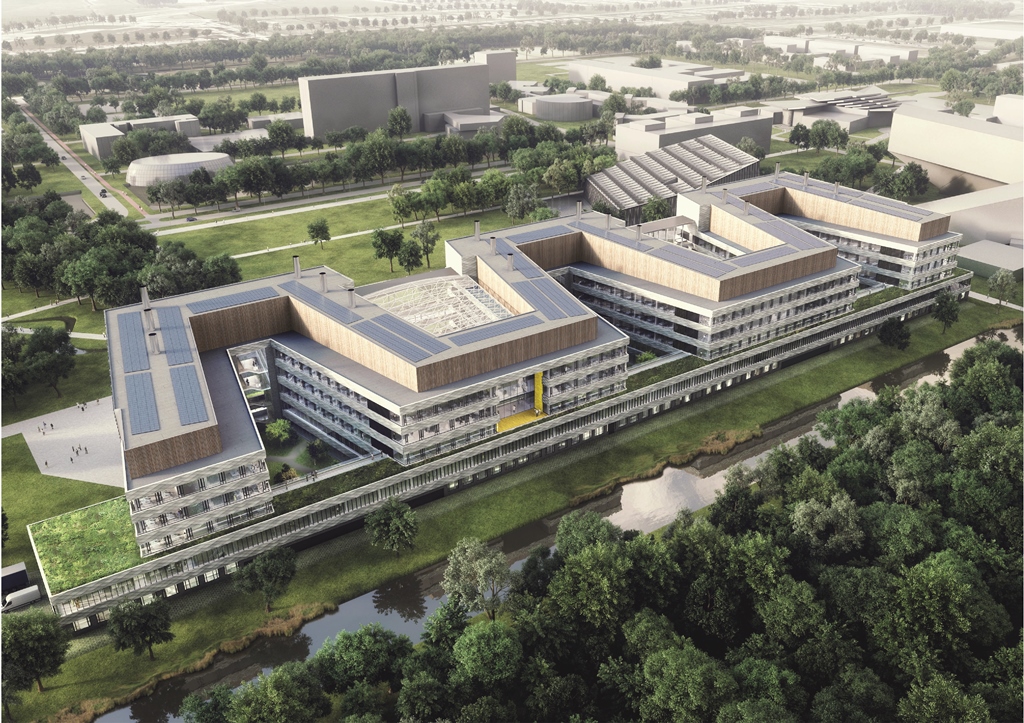
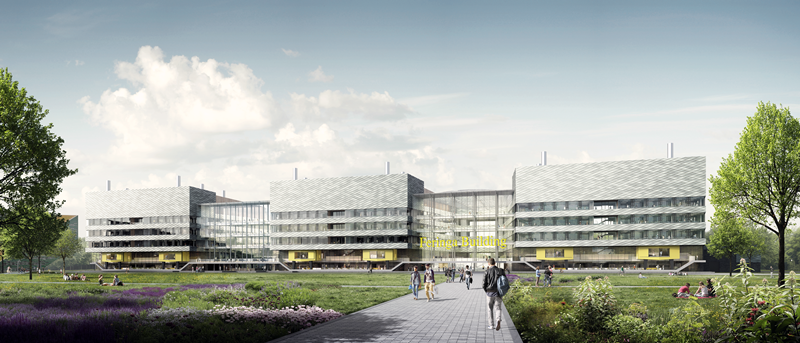
Construction schedule
The construction will proceed in phases. Over the past few months, the area at Zernike Campus has been made ready for development. To be able to settle into the building sooner, the first phase (1A) must be completed (in mid-2021), so that the first research groups of the Faculty can take up residence in the Feringa Building. After phase 1A, the sections 17 and 18 of Nijenborgh 4 will be demolished to make space for phase 2. This will start at the beginning of 2022, to be completed in the summer of 2023.
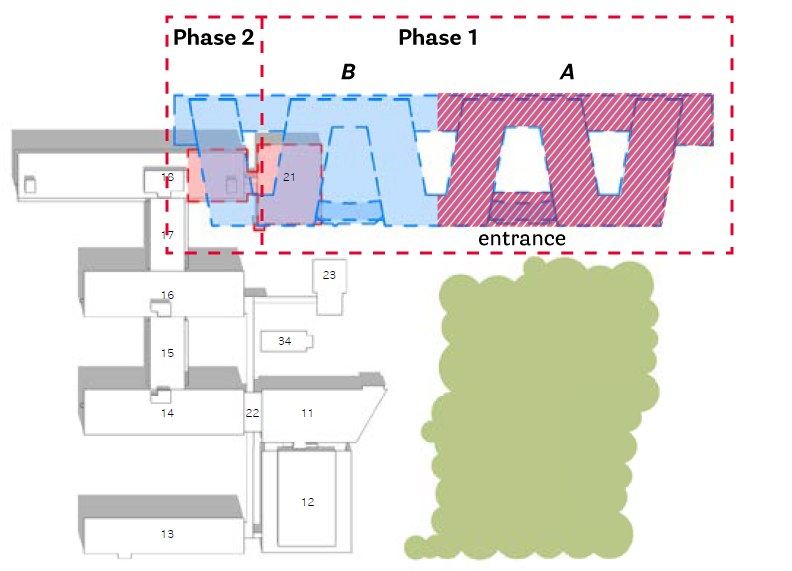
More news
-
15 September 2025
Successful visit to the UG by Rector of Institut Teknologi Bandung
